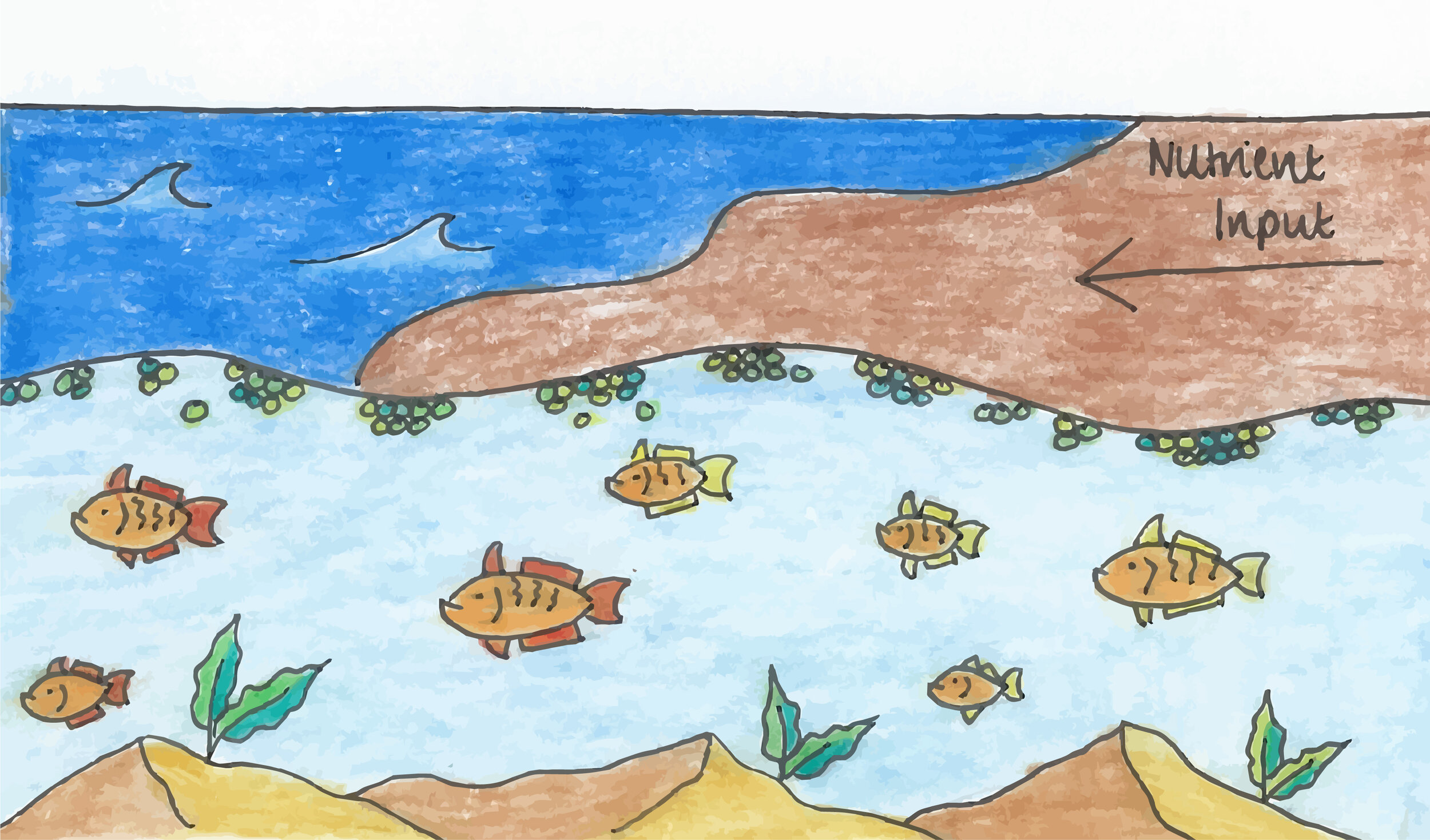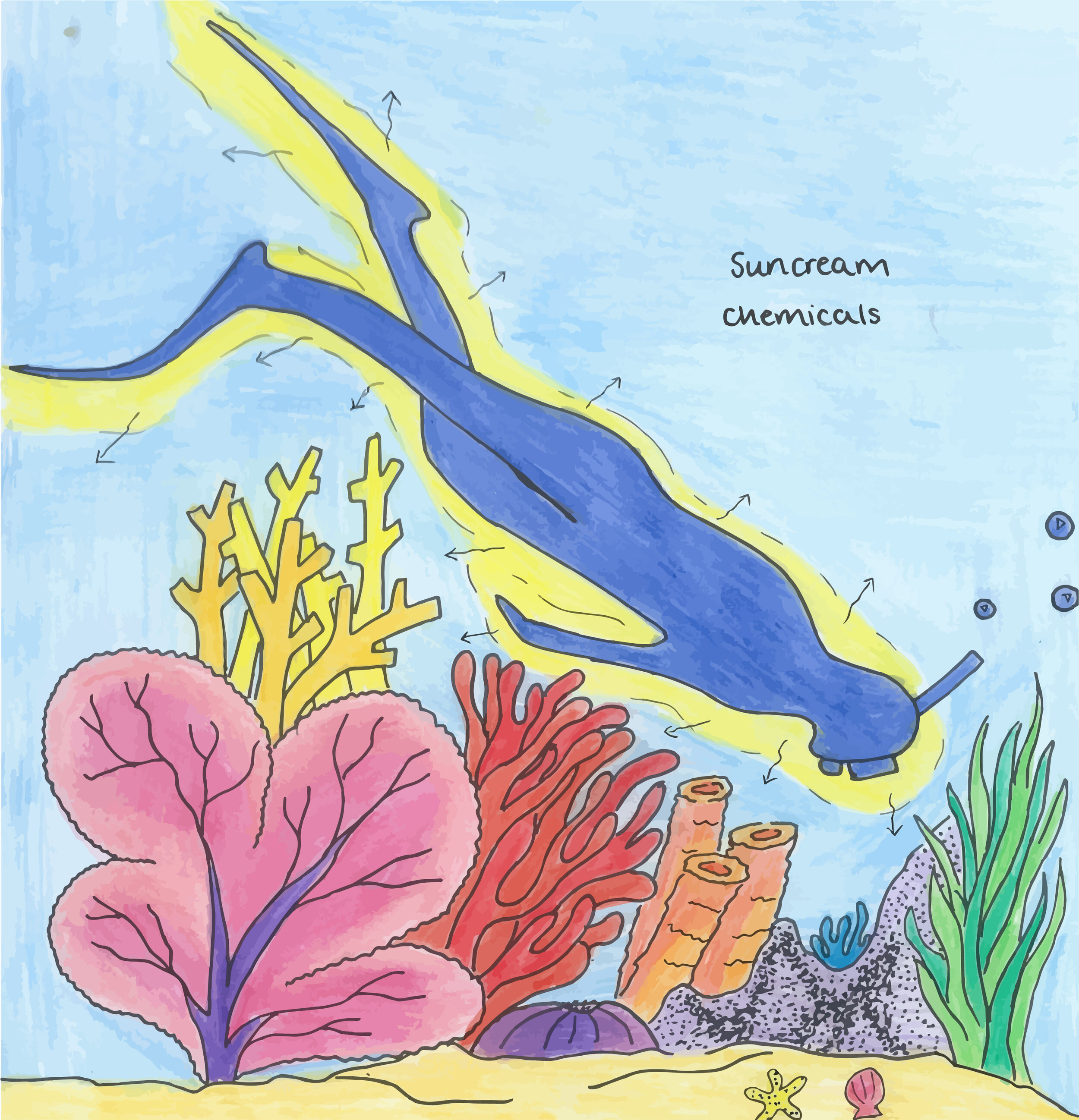What is it?
Chemical pollution is the contamination of the marine environment with harmful, artificial or anthropogenic pollutants. The most common of these can be grouped into:
Fertilizers
Pesticides and herbicides
Detergents and other household products
Industrial chemicals
Sewage
These pollutants introduce excessive nutrients, toxins, poisons and metals into marine ecosystems as well as instigating chemical bioaccumulation through the marine food web (the higher up the food chain an animal is, the more chemical contaminant it consumes through its food, this is a term referred to as “bioaccumulation” or “biomagnification”).There are also many other consequential implications of chemical pollutants in the ocean and these are dependent upon a huge variety of factors such as chemical type, geographical location, local ecosystem composition, season, waves and currents.
Where does it come from?
The most common process of ocean contamination by chemicals is through river and estuary systems. Rainwater, flooding and stormwater transport any products on land into nearby streams, rivers and estuaries. River systems then transfer these products into the ocean. Urban areas and agricultural activities are responsible for much of the industrial, commercial and even recreational pollutants that end up in the ocean through sewage leaks and ineffective water treatment. Pharmaceutical, health and body care products are an example of recreational pollutants that end up in our oceans through unsuccessful water treatment works. What
What happens to it?
The transportation, distribution and consequential impact to marine ecosystems is dependent upon the individual pollutant. This includes:
How persistent they are (how long they exist in the environment before degrading)
How water soluble they are (more soluble pollutants dissolve more easily within the seawater and therefore are transported further offshore than those less soluble)
Many chemicals become absorbed into sediments as they are transported through water systems and some of the most chemically contaminated sediments are found in estuaries, coastal wetlands or marshes near to urban areas or densely agricultural land.
How is it harmful?
Dead zones
The initial ecological responses to fertiliser and nutrient input seems beneficial however it is the knock on effects and longer term impacts that shift from seemingly beneficial to entirely detrimental on a marine ecosystem.
Fertilisers and sewage that contaminate ocean water provide excess nutrients such as nitrogen and phosphorus in a form that is highly beneficial to marine phytoplankton. Phytoplankton are photosynthesizing algae that utilise these excess nutrients to grow and reproduce.
This creates huge algal blooms that can frequently be seen from space by satellite imaging. The growth and reproduction bloom of phytoplankton allows higher levels of the food web to benefit temporarily: zooplankton consume the abundant phytoplankton and small fishes consume the zooplankton. More predatory fish or marine mammals then consume the small fish. This increase in populations results in an increase in animal waste and faeces it also results in a natural increase in mortality: a bigger population will have a greater number of death.
Another effect of the algal bloom on the sea surface is the reduction of sunlight reaching plants on the seafloor. This initiates mass mortality of seafloor plant species. The vast increase in waste and corpses end up on the seafloor where aerobic bacteria known as decomposers break it down. This process requires oxygen which is extracted from the water in great quantities. A reduction of oxygen levels in these areas causes more mobile animals to move away and less mobile animals to die, providing yet more material for the decomposers.
When oxygen levels become minimal the environment is classes as anoxic, in these conditions the only organisms that may survive there algal blooms and anaerobic bacteria as they are able to decompose matter without the need of oxygen. At this point the area is known as a dead zone: an area that can support no life but anaerobic bacteria.
There are currently 400 dead zones across the world’s oceans. One of the most significant is located by the mouth of the Mississippi river. The continuous outflow of fertilizer and sewage that is washed from the vast agricultural land of North America into the Mississippi river and transported into the Gulf of Mexico has established a dead zone of 6000 square miles.
Pesticides, specifically those that are classed as “organochlorides” are comprised of compounds that are not readily degradable and have now been detected in a wide range of species across the world. They have found to accumulate through trophic transfer by several marine animals and are especially prevalent in top marine predators. The concentrations found in marine predators are generally well above those found in their food. It is now believed that organochloride pesticides are long term contaminants of the environments and marine sediments have been found to be where the majority of them end up. One of the most publicised of these is DDT. DDT is one of the first synthetic insecticides that was developed in the 1940s and past figures have calculated that as much as 25% of the worlds DDT production might have ended up in the ocean and a proportion of this has entered the marine food web.
Species affected
Once in the marine environment pesticides are extremely insoluble and can be absorbed into materials such as the tissues and fats of animals, rather than being dissolved into the water. The transportation of DDT specifically, through trophic transfer has caused egg shell thinning of predatory seabirds and resulted in their reproductive failure. The Brown pelican and Double crested cormorant have suffered virtually complete reproductive failure in an area of California as a result of DDT.
Bans to certain consumable fisheries products such as Baltic cod liver oil and some Californian mackerel has occurred in the past due to excessively high DDT concentrations. High levels of DDT and other pesticides are still present in several marine species including some that are consumed by humans.
Studies have now found that marine chemical pollution from sun cream is of increasing concern, especially to environmentally sensitive habitats such as coral reef systems. With the majority of reefs existing at tropical and subtropical latitudes, these locations are exactly the places where sun cream application and ocean activities go hand in hand. The reality is, individual humans are now becoming direct sources of sun cream contamination in our oceans and to a lesser extent, river systems and ineffective water treatment contribute too.
What has been done?
Chemicals:
Discharge into water sources in the UK is regulated through the Environmental Permitting Regime (EPR). This covers the entry of any poisonous, noxious, polluting matter, waste matter, trade effluent or sewage effluent into freshwater or coastal waters. Penalties to those guilty of breaking regulations are enforced by the EPR.
DDT:
The threat that some pesticides such as DDT pose to the natural environment has resulted in their ban or restriction in most developed nations. However their use is still unregulated within many underdeveloped countries and are causing great concern to both environmental and human health. It is likely that DDT will continue to be used in various parts of the world and therefore continue to contaminate our marine waters. Even in areas no longer using DDT, contaminated estuarine sediments are releasing previously bound DDT through sedimental shifts.
General:
DDT represents just one way anthropogenic products make their way into our oceans and cause detrimental ecological effects. With water treatments works not being 100% effective in removing anthropogenic products and flooding events occurring annually, there are hundreds of man-made products who’s chemical make it in to the ocean. This include haircare products, moisturisers, lotions, perfumes, cleaning products, washing products, the list is endless. All of these products contain a multitude of chemical components of which we don’t know the extent of the ecological threat they pose.
Products:
Many household products and beauty products have now been developed to be more eco-friendly by using natural ingredients. These products include, washing detergent, dishwashing and cleaning products as well as numerous face, body, haircare and beauty products. Various sun creams have also been developed to be more ecologically safe to marine environments and have a “reef safe” label somewhere on their packaging. All of these products are becoming increasingly easy to get hold of and pitched at more affordable prices to encourage people to choose more environmentally friendly options.
Can it be stopped?
Fertilizers, pesticides, herbicides, household and beauty products demonstrate just a few ways anthropogenic products are making their way into our oceans. Because we don’t know the full extent of the ecological threat they pose, especially with regards to household and beauty products, further scientific research is vital to gain an understanding of how our day to day life may be chemically polluting our water systems and oceans.















